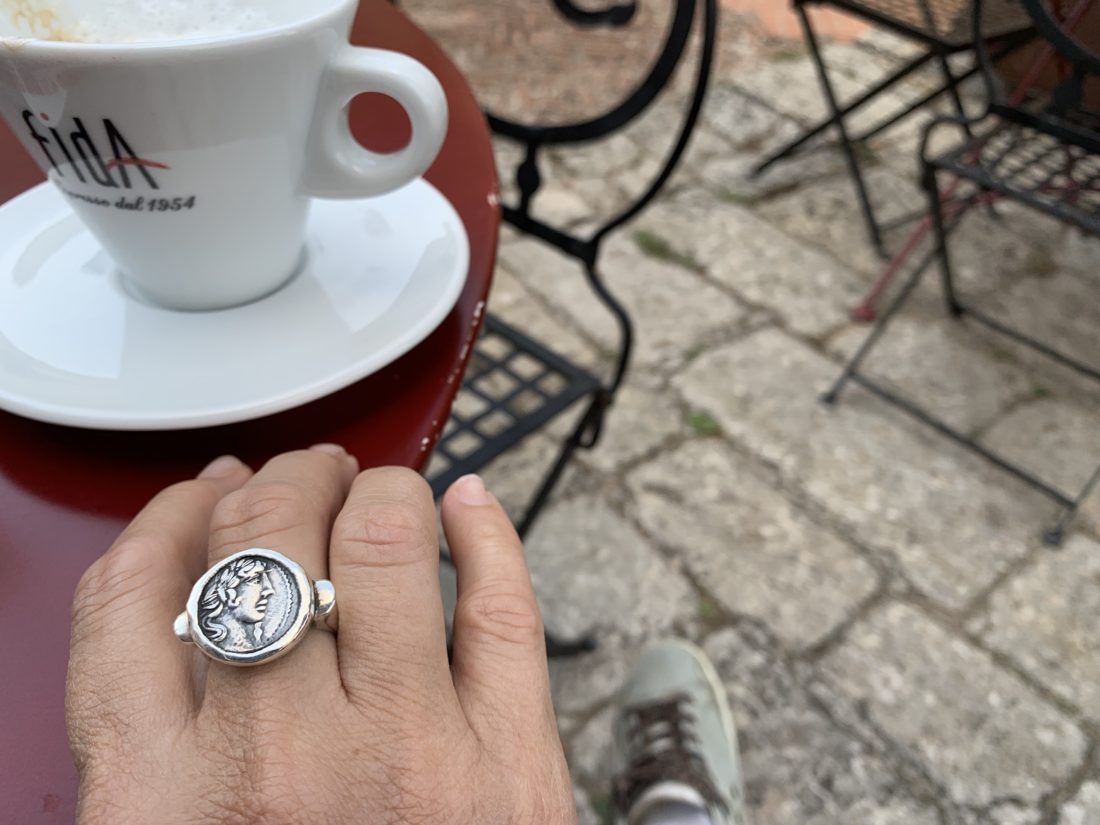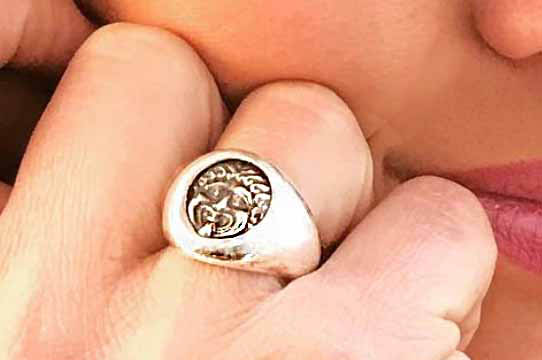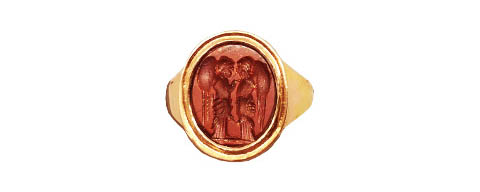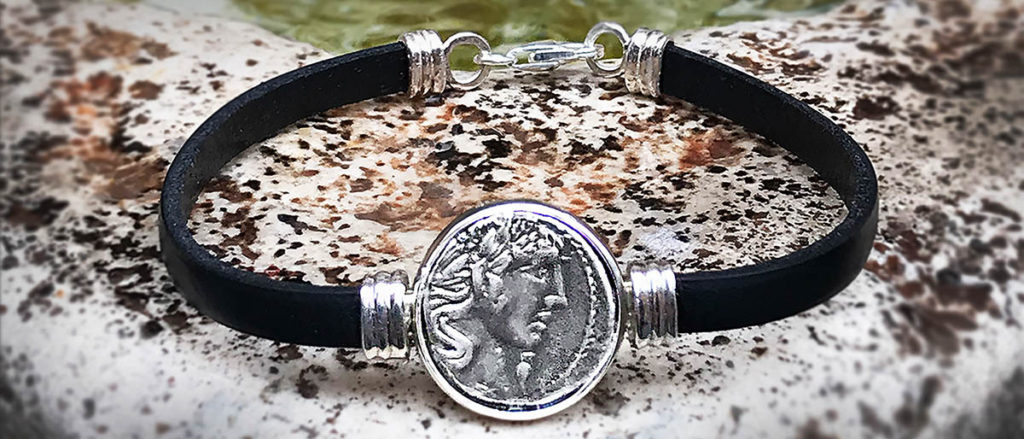
Holiday gift inspirations: wearable history
As I described in a previous Itch, my saga to find an antique Roman coin ring has been achieved after many years of searching. But when I was thinking of special things I could share with you that would make great gifts, and easily ship outside of Italy, I decided to go back to the ring’s source and ask the owner what items he has at the moment that he particularly loves—it varies all the time as all pieces are one of a kind. The small store Serra, in Rome, mainly has beautiful china, silver, and crystal, but Alessandro (the fourth generation of the family to have the store) has a passion for history and antique coins and intaglio which he makes into jewelry. He speaks excellent English, can tell you the history of everything he sells, and the authenticity is guaranteed. And he is kindly offering Itch readers a 10% discount.
Something I learned from Alessandro while researching this article is that that making jewelry from coins and intaglio is far more ancient than I’d realized. As Alessandro wrote:
“The custom of encrusting coins to create jewelry is extremely ancient; its origins are to be found in the Greek world and the most widespread was in Rome between the first and third centuries AD. The Romans attributed a talismanic and amuletic power to the jewels thus made, giving the coin a much more complex task than that for which it was minted. Glyptics, or intaglio, are the “minute but not lesser” art of engraving precious and semi-precious stones (but also glass pastes). In Roman times they were widely used for rings, for men or women, necklaces, bracelets and earrings. The engraved stones were worked by skilled engravers — the themes of the figures were chosen by the customers or left to the aesthetic sense of the artist. Almost always the choice was of mythological or allegorical subjects. Still today there is a flourishing market of these ancient stones, which over time have been found because they were often removed and thrown away by those seeking only gold and silver, as by the Barbarians in the days of the invasions.”
Here are a few of Alessandro’s favorite things in the store at the moment. He, of course, has a much wider variety available. To purchase you can contact Alessandro directly at info@serra-roma.it. (I am passing this along because I love this jewelry … no commission.)

Silver ring with a Roman coin of a Gorgon DRACHM – NEAPOLIS (411-348 B.C.). Because of their legendary and powerful gaze that could turn one to stone, images of the Gorgons were put upon objects and buildings for protection. Reverse is Artemis. She was the Hellenic goddess of the hunt, wild animals, wilderness, childbirth, virginity and protector of young girls, bringing and relieving disease in women; she often was depicted as a huntress carrying a bow and arrows. € 670,00 + € 50,00 shipping with insurance (and don’t forget to ask for the 10% discount.)

Gilded silver earrings with original Roman coins depicting Julia Mamea and Emperor Septimius Severus. -Coin 1: Denarius_Front: IVLIA MAMAEA, draped and diademated bust right. JVLIA MAMAEA (180-235 AC). She was the nephew of the emperor Septimius Severus—guy on on the other coin. -Coin 2: Denarius_Front: SEVERVS PIVS AVG. Head right. LVCIVS SEPTIMIVS SEVERVS ( 193-211 A.D.). Born in A.D. 146 at Leptis Magna in Africa, Severus was a soldier of outstanding ability, holding a series of increasingly important commands until, at the death of Commodus, he was governor of Upper Pannonia. Severus was saluted as emperor by the troops at Carnantum. He spent much of his reign in campaigning in different parts of the Empire and also visiting many of the provinces. He died at York on February 4th, A.D. 211. € 890,00 + € 50 shipping with insurance (before 10% Itch discount.)

Gold ring with a Roman intaglio (Ist century A.D. – engraved cornelian) depicting two winged Nike facing each other. Nike is the goddess of strength, speed and victory. €2.550,00 + €50 shipping including insurance (before 10% Itch discount.)

Silver and leather bracelet with original Roman coin depicting Apollo. Denarius_ Front: Laureated head of Apollo. PANSA behind. Apollo is the symbol of male beauty, god of music, art, knowledge, illness resolution, archery and the sun. He is always depicted as a beautiful man with the perfect body form. Rear: C. VIBIUS C. Minerva who leads a quadriga at a gallop. Minerva was the Roman goddess of wisdom and strategic warfare and the sponsor of arts and trade. € 590,00 + € 50,00 shipping with insurance. (Before 10% discount.)






No Comments